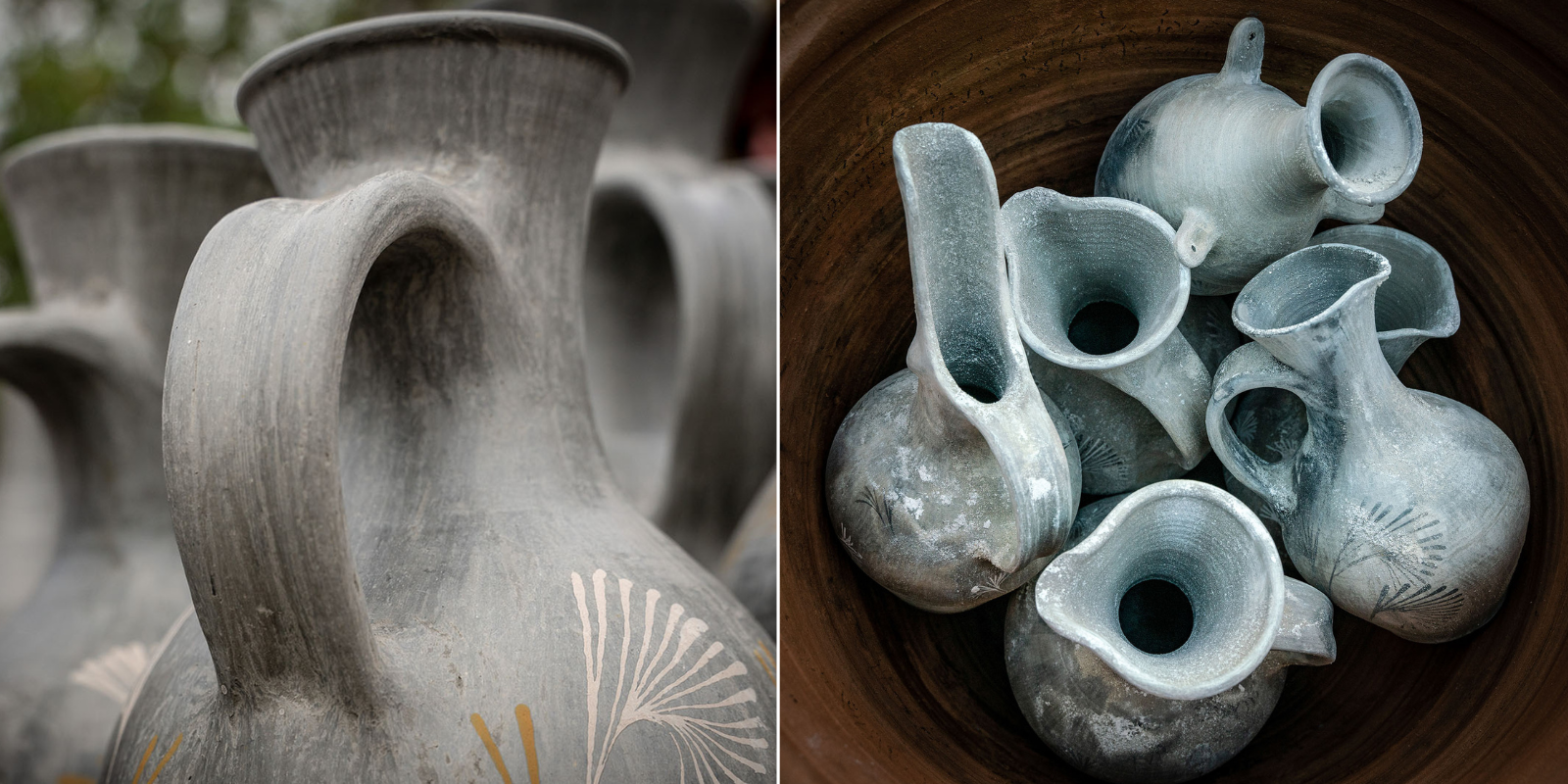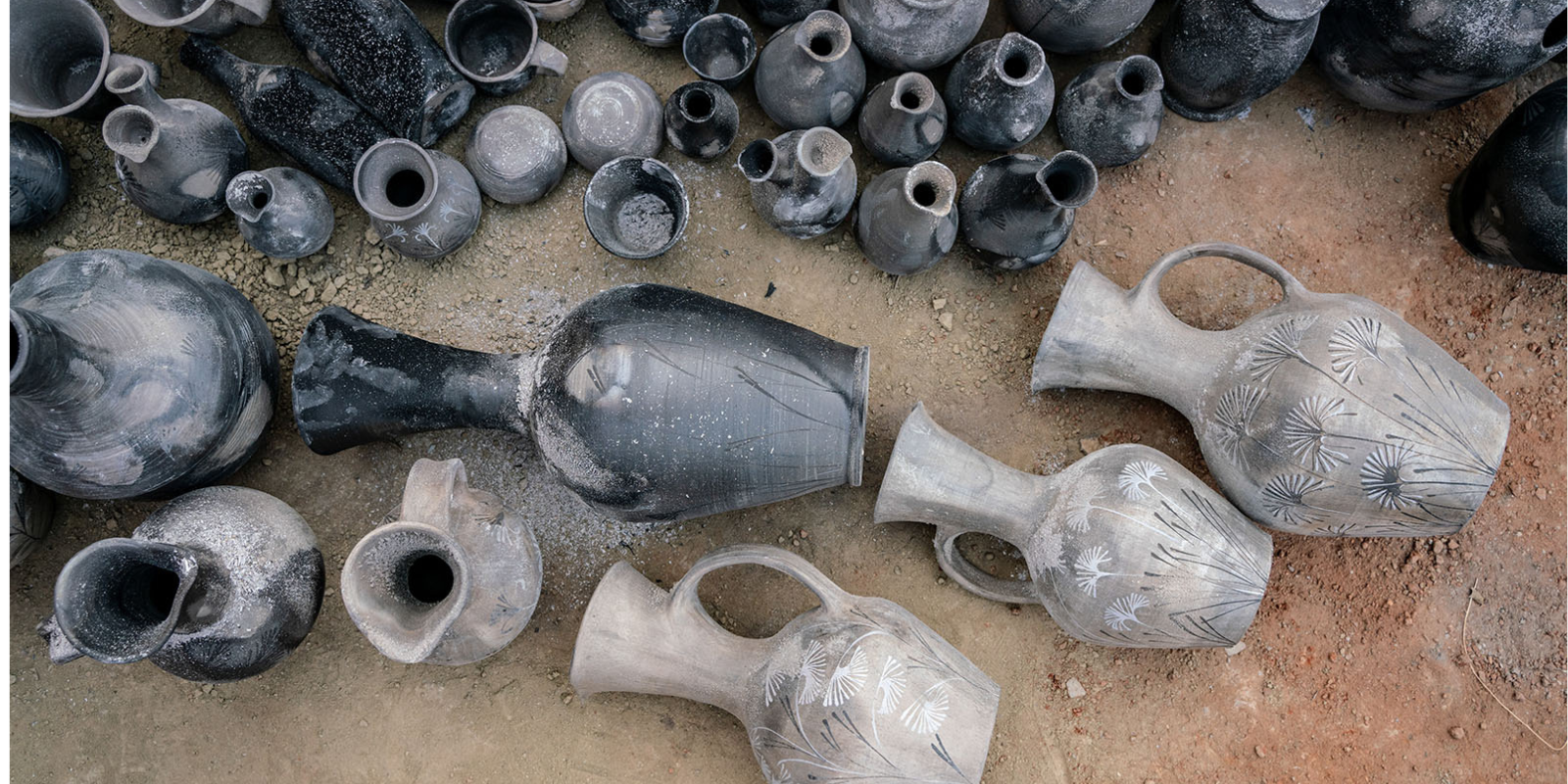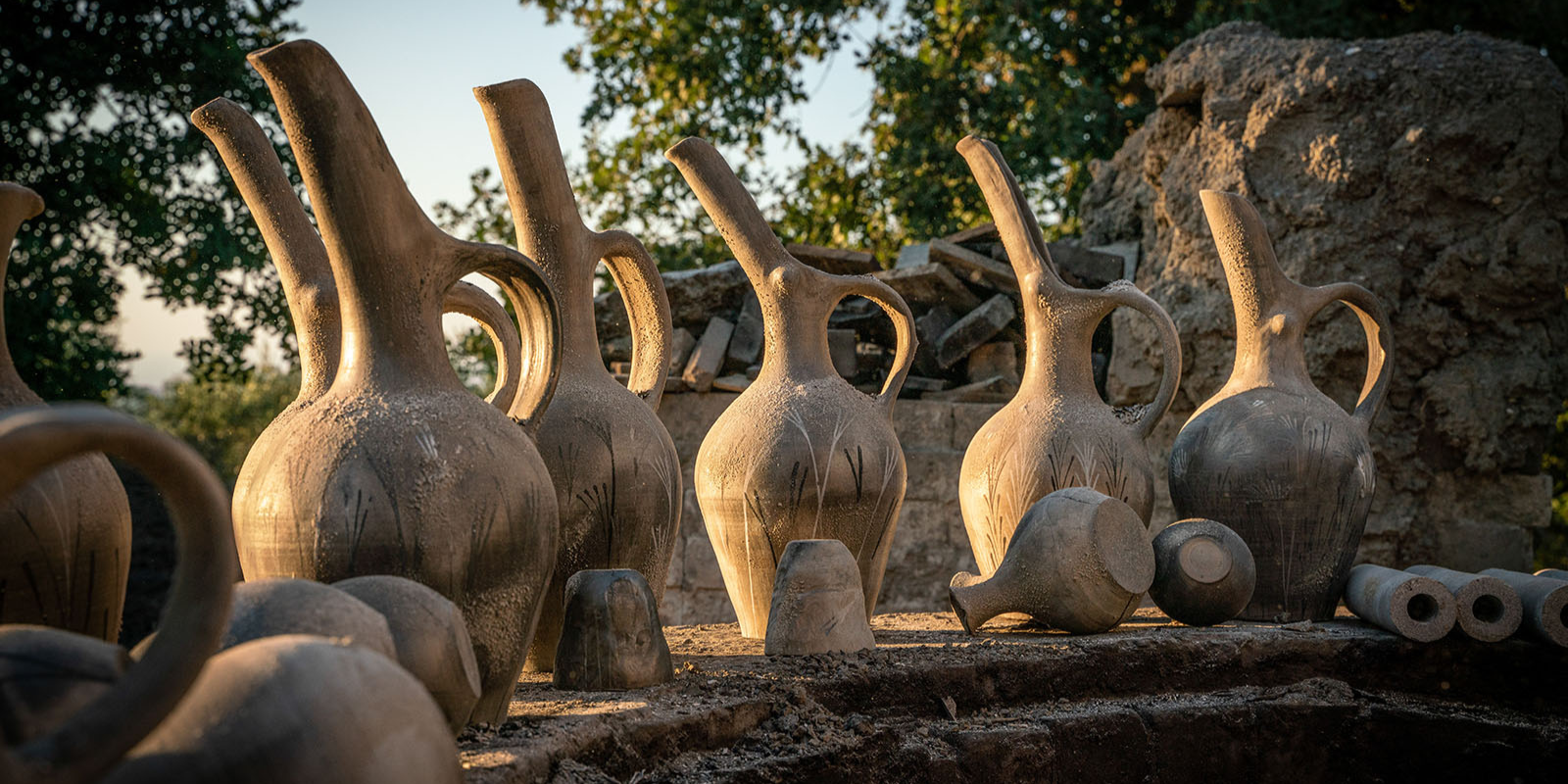The History of Cretan Pottery
Minoan pottery has been used as a tool for dating the mute Minoan civilization. Its artistic styles reveal that the Minoan civilisation took pleasure in the novelty and variety of forms. Pots that contained oils and ointments, exported from 18th century BC Crete, have been found at sites through the Aegean islands and mainland Greece, on Cyprus, along coastal Syria and in Egypt, showing the wide trading contacts of the Minoans. Minoan pottery consists of vessels of various shapes, which as with other types of Ancient Greek pottery may be collectively referred to as “vases”, and also “terracottas”, small ceramic figurines, models of buildings and some other types. The finest achievements came in the Late Minoan period, pieces of which were widely exported around the Aegean civilizations and sometimes beyond, and are the high points of the Minoan pottery tradition.
Little is known about the way the pottery was produced, but it was probably in small artisanal workshops, often clustered in settlements near good sources of clay for potting. For many, potting may well have been a seasonal activity, combined with farming, although the volume and sophistication of later wares suggests full-time specialists, and two classes of workshop, one catering to the palaces.
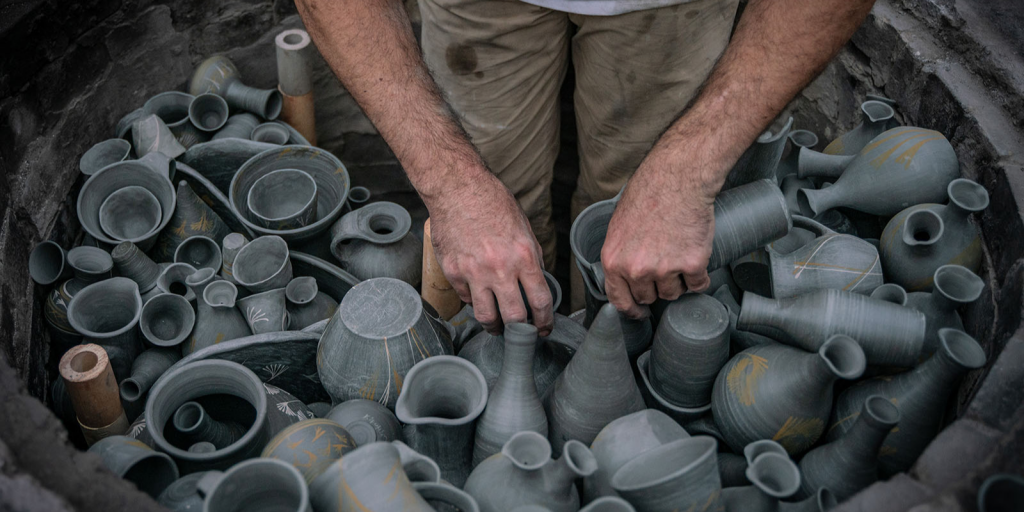
Credit: Keramion, Greece.
Around 1450 BCE, the Mycenaean Greeks must have moved into the palace of Knossos. They were well-established by 1400, if the Linear B tablets can be dated to then. The resulting culture is not a break with the Minoan past. Minoan traditions continue under a new administration. However, the vase forms and designs became more and more Mycenaean in character with a large variety of decoration. Style names have multiplied and depend to some degree on the author. The designs are found also on seals and ceilings, in frescoes and on other artefacts. Often Late Minoan pottery is not easily placed in sub-periods. In addition are imports from the neighbouring coasts of the Mediterranean.
During the classical and Hellenistic Periods (480 BCE – 67 BCE), pottery production in Crete continued, albeit with a shift in styles. The influence of Athenian pottery became prominent, as Cretan potters adopted red-figure and black-figure techniques. The subjects depicted on the pottery ranged from mythological scenes to daily life activities.
In the Roman and Byzantine Periods (67 BCE – 9th century CE),, the local pottery industry flourished. Roman pottery styles, such as terra sigillata (red gloss ware), were produced on the island. During the Byzantine period, in the 10th-12th century, rural pottery was locally produced and similar to that of previous centuries, with the increasingly common appearance of glazed ware imported from Byzantium with the characteristic decoration of the time. During the 12th century, Cretan biscuit ware (pottery that has been fired once but not glazed) was refined and certain forms emulated Aegean prototypes widely circulating in the Byzantine Empire. At the same time, locally-produced open glazed vessels with a short wide foot appeared, in monochrome dark brown or dark green. These probably had a ritual function, as their sherds are found in the environs of old churches.

During the Venetian Occupation, 1205-1645, in the first period of intense hostilities (1205-1300), pottery production fell or remained stationary. During the second period (1300-1460), ending with the fall of Constantinople to the Turks, local production diversified into a wide variety of forms and decoration. Small biscuit ware vessels began to be decorated with applied clay colouring (slip), shading from red to dark brown depending on the firing. The decoration was particularly simple, consisting of parallel lines, cross hatching etc. Large biscuit ware vessels such as storage jars, basins, beehives, troughs etc. began to come in various shapes and sizes decorated with incised or stamped designs. During this period, Cretan glazed ware appeared and flourished. This included plates, bowls, jugs etc., in soft, delicate shades of green and yellow, or with brown spots on a white background. Domestic ware was decorated with geometric patterns, spirals, flower petals etc. This decoration was applied by delicate incision of the vessel, over the slip and colour, which darkened after firing. The decoration of Cretan glazed ware differs from that found in the Peloponnese, Cyprus and Asia Minor. The third period (1460-1645) was distinguished by a major resurgence in pottery production during the first phase to 1550. The large forms, mainly storage jars, were often decorated using cylinder seals, which were rolled around the vessel to produce decorative bands. The variety of glazed ware increased and the vessels were distributed widely through the countryside, with a corresponding steady improvement of quality. During the second phase (1550-1645) pottery, and especially glazed ware, began to decline. Incised decoration was simplified or even vanished entirely, while coloured decoration became softer and spread across the whole surface. This decline is probably due to the widespread insecurity of the Venetian Dominions following the fall of Cyprus to the Turks (1570) and the Ottoman advance.
In the Ottoman Rule and Modern Times (1669 CE – Present), production in Crete declined significantly. However, traditional Cretan pottery continued to be made in small workshops, primarily for household purposes. The pottery was often characterised by its simplicity and earthy tones. In the 20th century, there was a revival of interest in Cretan pottery, with artisans incorporating traditional techniques and designs into their work. During the first phase of the Turkish Occupation, 1645-1898, biscuit ware with clay slip continued to be used, but glazed ware became rarer and coloured exclusively a light green. At the same time, characteristic two-coloured plates were imported from Rhodes. The larger vessels, particularly storage jars, continued to flourish due to the high production of olive oil during the 18th century. However, their decoration too was reduced. During the second phase of the Turkish Occupation (1770-1898), the constant armed Cretan risings against the Turks created deep social and financial insecurity. All types of production were drastically reduced and limited to essentials necessary to survival. Glazed ware was no longer produced and all other types of pottery were only present in their simplest forms.
In the 20th Century, the liberation and reunification with Greece took place. During the first period (1898-1960) saw the renaissance of traditional pottery. Demand rose in step with the economic revival and the free movement of goods and money. The production of storage jars, beehives, basins, jugs etc. flourished. Small vessels, on the other hand, were gradually reduced and replaced by new mass-produced materials such as glass, aluminium and iron. Certain traditional decorative elements were preserved: stamping with a serrated wheel, incision with a small fine comb, and a simplified form of clay decoration used only on jugs. The beginning of the second period (1960-2006) coincided with the post-war radical change in living standards in Greece, a country whose current borders were only determined in 1910. Crete, like other border regions, entered modern material culture. In 1960 the travelling potters stopped their annual peregrinations across the whole island and small pottery centres ceased production. The large centres, such as the villages of Thrapsano and Margarites, continued to make use of water such as water jars, basins, flowerpots and storage jars (pithoi) until 1980. From 1980 to the present day they have turned to mass production of traditional and other vessels for tourists or for use as decoration, most of which are exported to Western Europe where they are very popular, particularly pithoi. Production methods remain more or less the same, but not the clays and firing in the kiln.
In “Keramion” the ancient techniques of ceramics come to life once more, and Experimental Archeology becomes a reality.
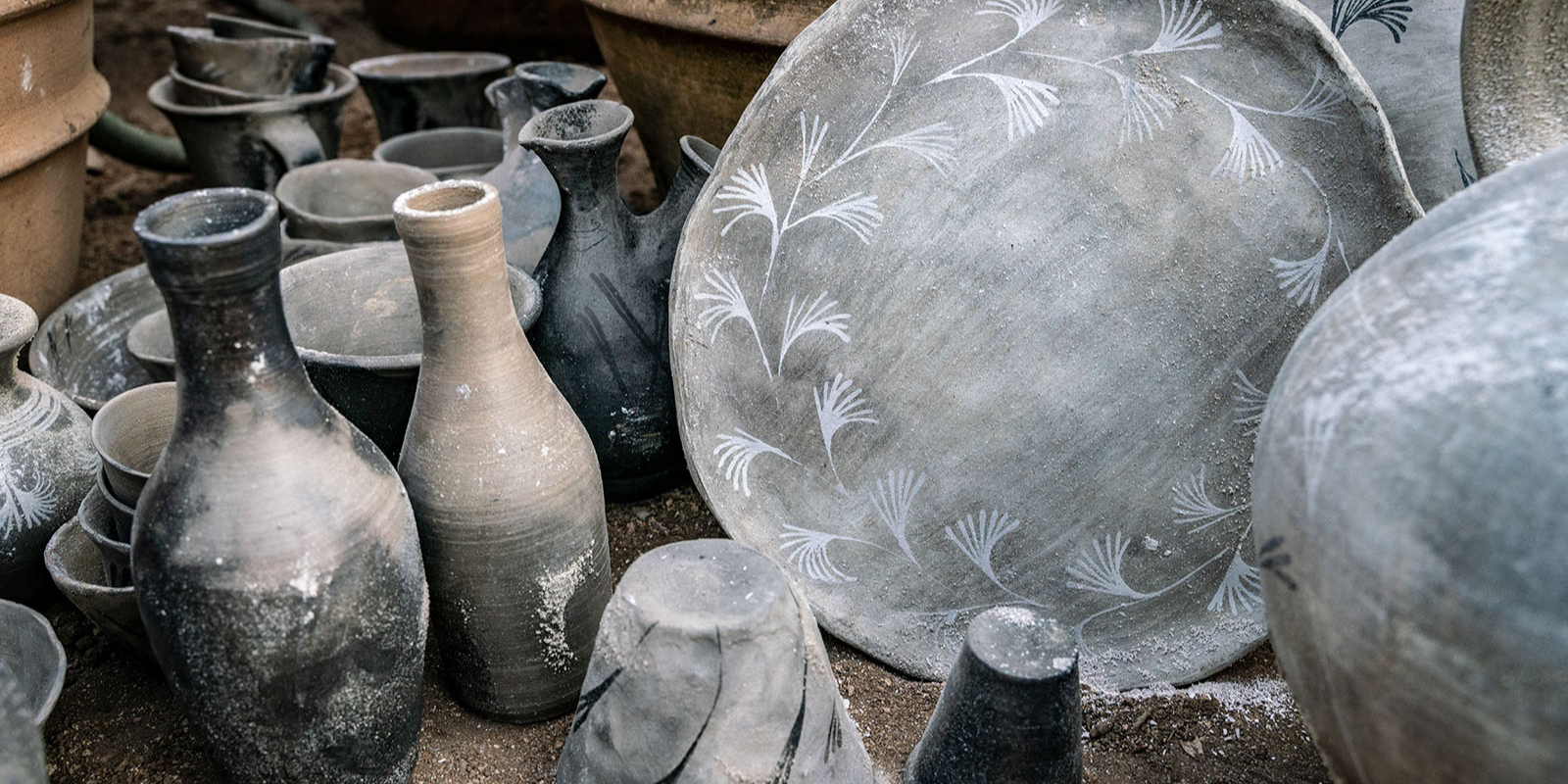
Credit: Keramion, Greece. Decorating.
The process of making
Step 1 Soil collection and processing: The process begins with extraction, where clay-rich areas, often near riverbeds or hills, are identified, and the material is collected using hand tools or machinery. Drying and weathering may follow, allowing the clay to break down naturally over weeks or months. Next, the material undergoes crushing and sieving to remove rocks, roots, and other impurities. If necessary, the clay is subjected to soaking and slaking, where it is mixed with water and left to soften, helping to separate finer particles from coarser ones. The next step, decanting and filtering, ensures unwanted materials are removed by pouring the liquid clay (slip) into another container, leaving behind heavier particles. Finally, the drying and storage phase brings the refined clay to a workable consistency, after which it is stored in blocks or piles, ready for kneading and shaping.


Credit: Keramion, Greece. Clay extraction and processing.
Step 2 Clay kneading: process of preparing clay for use by removing air pockets, making it uniform, and improving its workability.
Step 3 Shaping pottery on the wheel. More about this process can be found here, but in the specific context of Limoges porcelain.
Step 4 Burnishing with pebbles
Step 5 Firing in a wood kiln: The firing process takes 12 hours, starting early in the morning and ending at sunset when the temperature in the kiln reaches 1000°C. When the pottery has been fired, the reduction process is started by removing oxygen from the kiln to capture the traces of the fire and the unique colours that make each piece of pottery individual and special. After firing, all the pottery is checked and left in water for 24 hour, so that it becomes stronger.

Credit: Keramion, Greece. Firing in a wood kiln and watering.
Step 6 Decorating with natural pigments
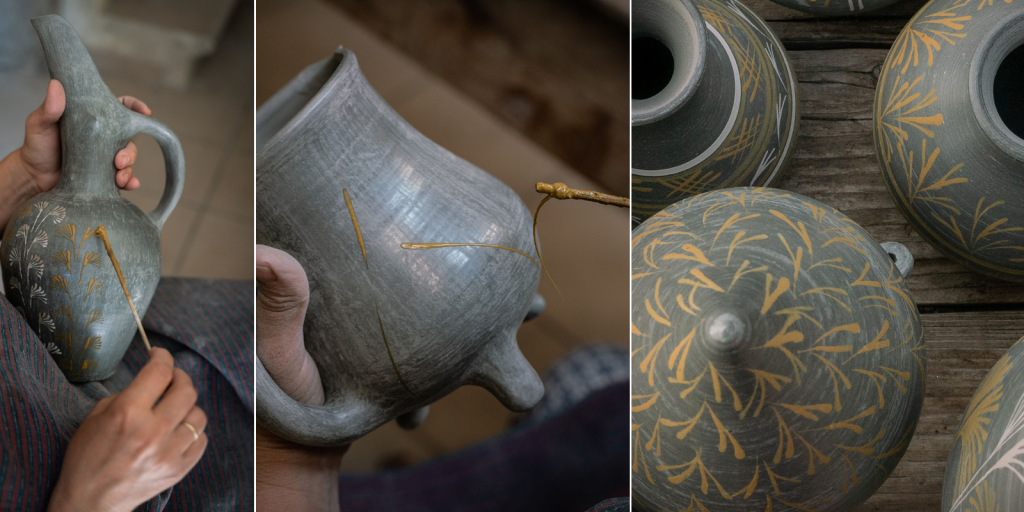
Credit: Keramion, Greece. Decorating.

